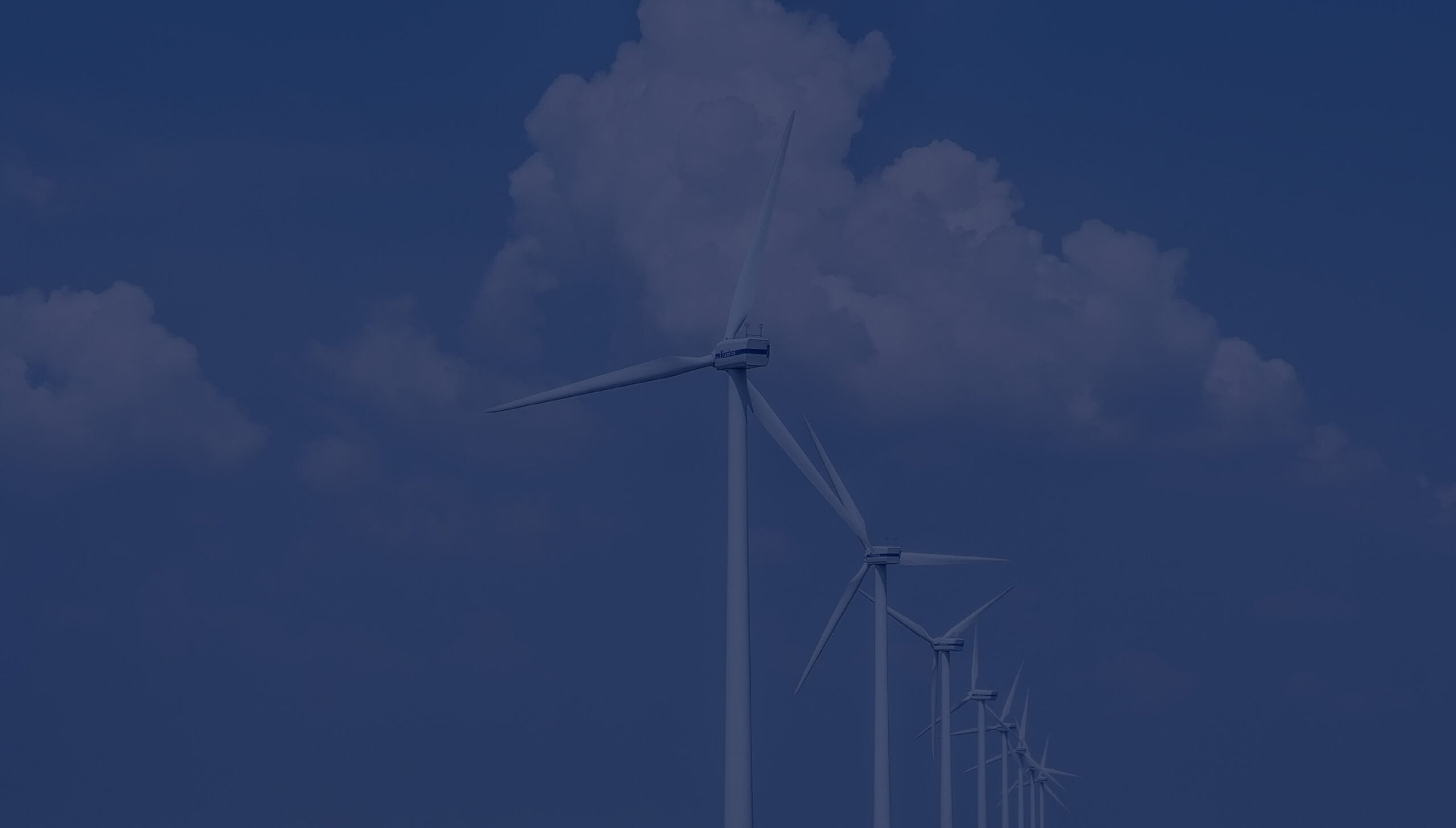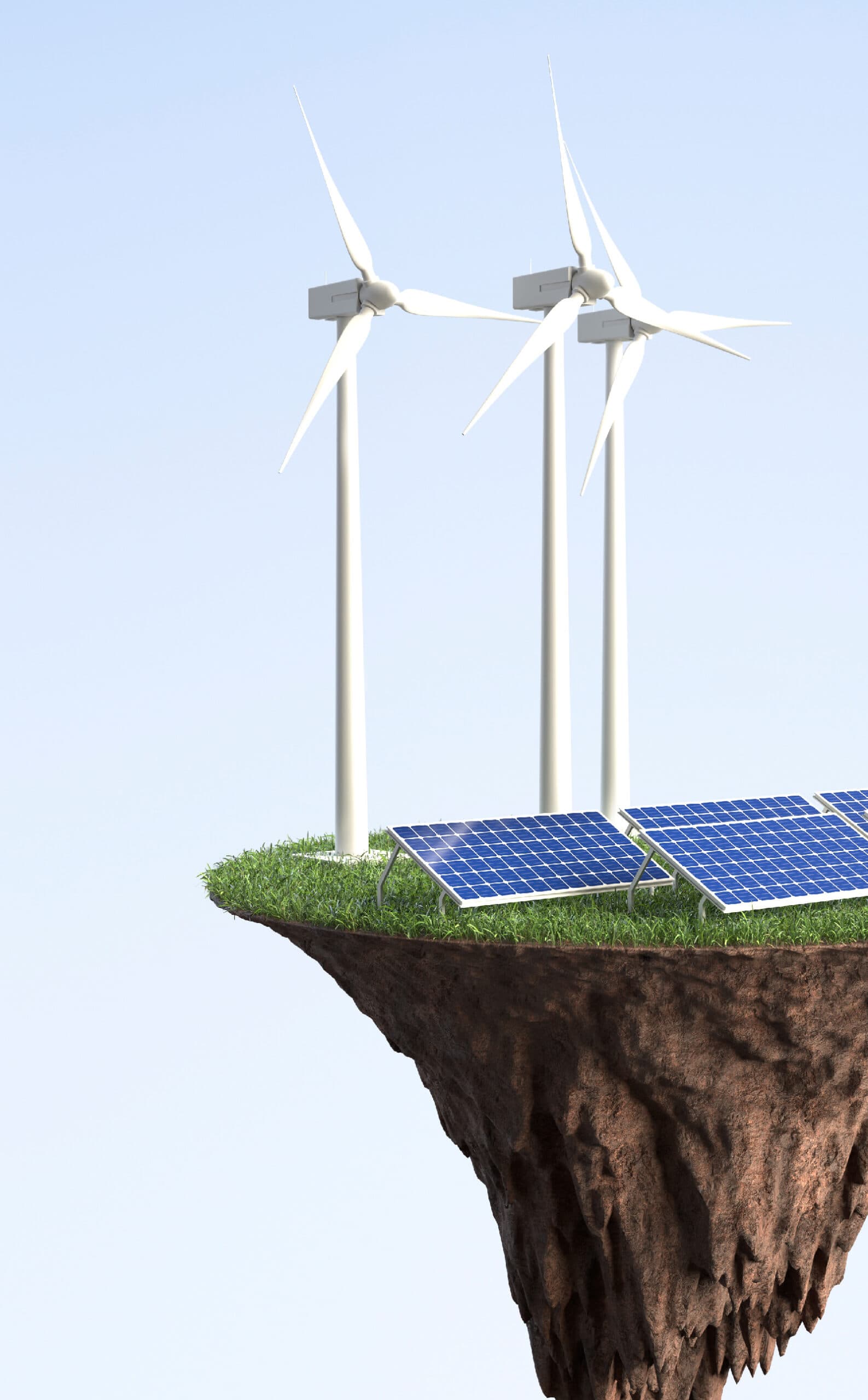
Rapid shift to renewable energy, driven by ambitious targets and supportive policies, is unlocking immense growth potentia
18.48 GW
Renewable Energy capacity is added during FY 2023–24
$19.98 Bn
FDI attracted during April 2020 to September 2024
40%
Cumulative electric power installed capacity from non-fossil fuels and 33-35% of emissions intensity of GDP reduced from the 2005 level as a part of Nationally Determined Contribution
India’s energy landscape has undergone a vast transition, with the focus shifting towards renewable means in the era of sustainability. As the world repositions itself towards sustainability, India’s renewable sector unleashes a new scope of opportunities. Over the past decade, India has made significant strides in diversifying its energy mix, gradually reducing its dependence on conventional fossil fuels and setting an enhanced target at the COP26 of 500 GW of non-fossil fuel-based energy by 2030. India’s installed non-fossil fuel capacity has increased 396% in the last 8.5 years and stands at more than 205.52 GW (including large hydro and nuclear), about 42% of the country’s total capacity (as of November 2024). Solar power has witnessed a 30-fold surge in adoption, with installed capacity increasing from a mere 2.5 GW in 2014 to about 94.16 GW as of November 2024. The government’s commitment to creating a sustainable world and scaling up solar capacity through initiatives like the International Solar Alliance reflects the country’s potential to harness solar power in collaboration with more than 120 signatory countries.
In addition, 100% FDI has been allowed under the automatic route for renewable energy generation and distribution projects subject to provisions of the Electricity Act 2003. India, at the 26th session of the United Nations Framework Convention on Climate Change (COP 26) in November 2021, announced its target to achieve net zero by 2070 and hence the renewable energy sector poses a vast range of potential beyond creating a cleaner future. Furthermore, with more than 2 times the leap in wind energy capacity to 47.95 GW today since 2014, India also looks forward to expanding the capacity to 99.9 GW by 2029-30 in major wind energy-producing states like Andhra Pradesh, Gujarat, Karnataka, Maharashtra, Rajasthan, Kerala, etc. The government of India has launched several initiatives, such as the development of solar parks, under which 50 solar parks across 12 states have been sanctioned with capacities of 500 MW or more. Sustainable Alternative Towards Affordable Transportation (SATAT) has been launched as an initiative to set up a Compressed Bio-Gas (CBG) production plant and make CBG available in the market for use in automotive fuels. The 100 Smart City project also includes a mandatory provision of roof-top solar for new construction and a 10% renewable energy provision for end-customers. The shift towards renewable energy, hence, involves a focal point towards the renewable energy segment, which has the potential to create more job opportunities and lead the world to inclusive growth.
100% FDI permitted under the automatic route
Bids for 50 GW per annum Renewable Energy capacity, with at least 10 GW per annum Wind power capacity, to be issued each year from 2023-24 to 2027-28
Existence of an Indigenous supplier ecosystem across solar, wind and green hydrogen
Forward-looking policies including waiver of Inter-state transmission
charges, Renewable Purchase Obligations and Production Linked Incentives

The Consolidated FDI Policy Circular is a...
The Consolidated FDI Policy Circular is a...
The Consolidated FDI Policy Circular is a...
The Consolidated FDI Policy Circular is a...
The Consolidated FDI Policy Circular is a...

Forward-looking policies including waiver of Inter-state transmission...

Forward-looking policies including waiver of Inter-state transmission...

Forward-looking policies including waiver of Inter-state transmission...

Forward-looking policies including waiver of Inter-state transmission...

Forward-looking policies including waiver of Inter-state transmission...

Forward-looking policies including waiver of Inter-state transmission...